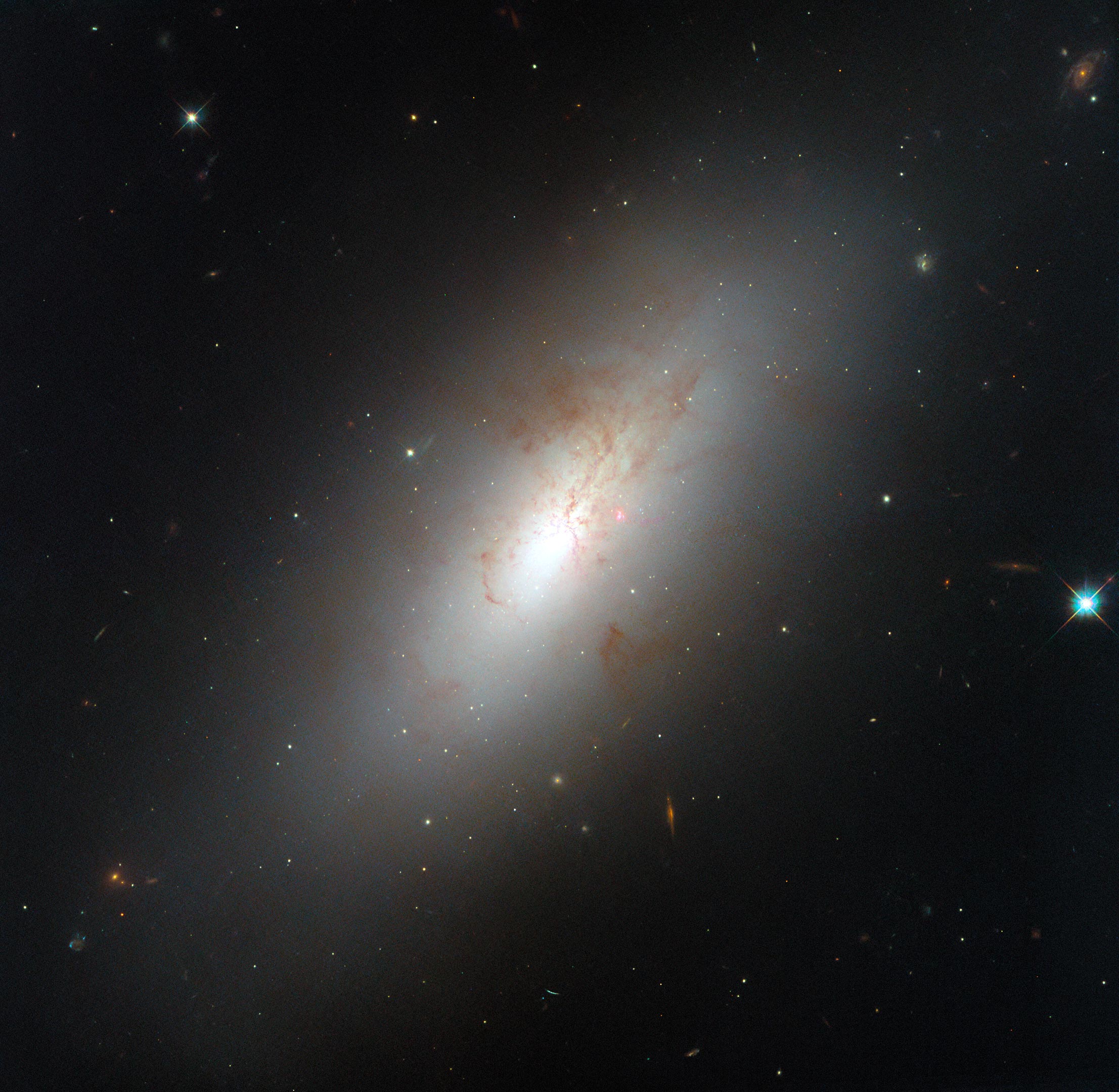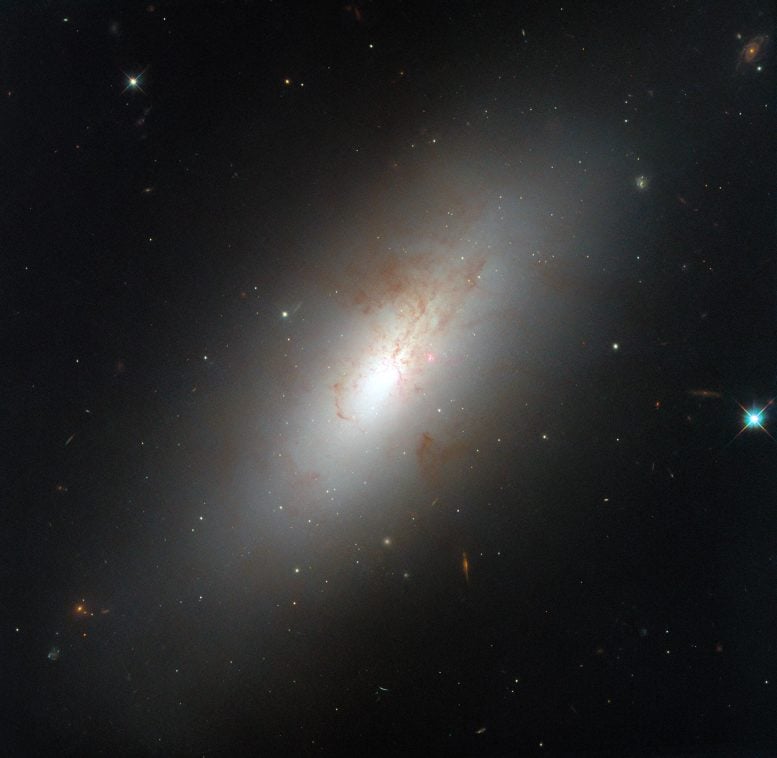

NGC 4694, a galaxy 54 million light-years away in the Virgo Cluster, is not easily categorized.
Featuring characteristics of both spiral and elliptical galaxies, it forms stars actively despite its armless disc. It’s connected via a hydrogen bridge to a dwarf galaxy, indicating a violent collision history, which complicates its classification further.
NGC 4694: A Unique Galaxy in the Virgo Cluster
Galaxies generally belong to one of two main types that are readily distinguishable. Spiral galaxies are young and energetic, filled with the gas needed to form new stars, and sport spiral arms hosting hot, bright stars. Elliptical galaxies have a much more pedestrian look, their light coming from a uniform population of older and redder stars.
However, other galaxies require in-depth study to understand: such is the case with NGC 4694, a galaxy located 54 million light-years from Earth in the Virgo galaxy cluster, and the subject of this Hubble Picture of the Week.
The Stellar and Dust Composition of NGC 4694
NGC 4694 has a smooth-looking, armless disc which — like an elliptical galaxy — is nearly devoid of star formation. However, its stellar population is still relatively young, and new stars are still actively forming in its core, powering the brightness we can see in this image and giving it a markedly different stellar profile from that of a classic elliptical galaxy.
The galaxy is also suffused by the kinds of gas and dust normally seen in a young and sprightly spiral; elliptical galaxies often do host significant quantities of dust, but not the gas needed to form new stars. NGC 4694 is surrounded by a huge cloud of invisible hydrogen gas, fuel for star formation. This stellar activity is the reason for Hubble’s observations here.
Collision and Transformation: The Secrets of NGC 4694
As this Hubble image shows, the dust in this galaxy forms chaotic structures that indicate some kind of disturbance. It turns out that the cloud of hydrogen gas around NGC 4694 forms a long bridge to a nearby, faint dwarf galaxy named VCC 2062. The two galaxies have undergone a violent collision, and the larger NGC 4694 is accreting gas from the smaller galaxy.
Based on its peculiar shape and its star-forming activity, NGC 4694 has been classified as a lenticular galaxy: lacking the unmistakable arms of a spiral, but not so bereft of gas as an elliptical galaxy, and still with a galactic bulge and disc. Some galaxies just aren’t so easy to classify as one type or the other!